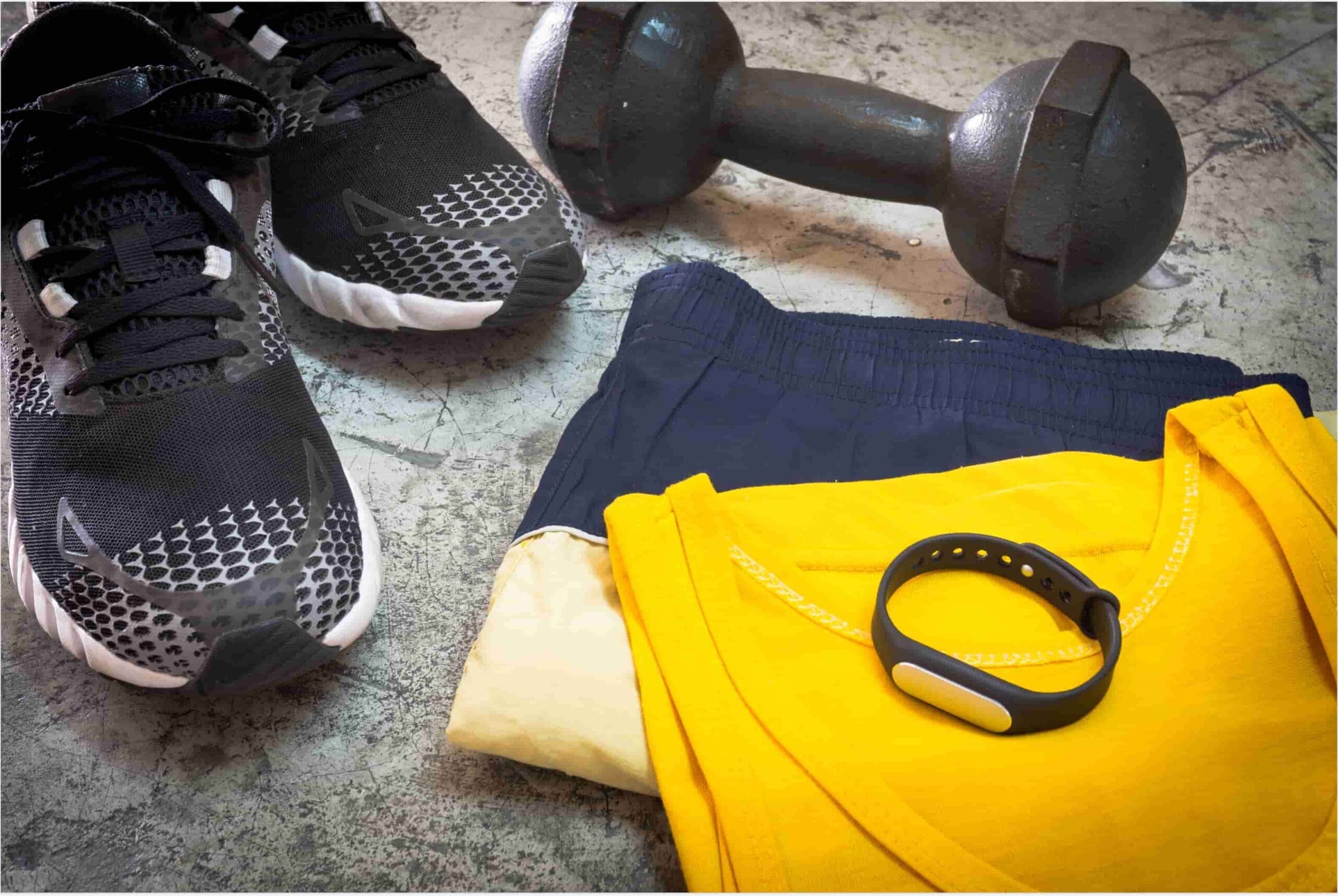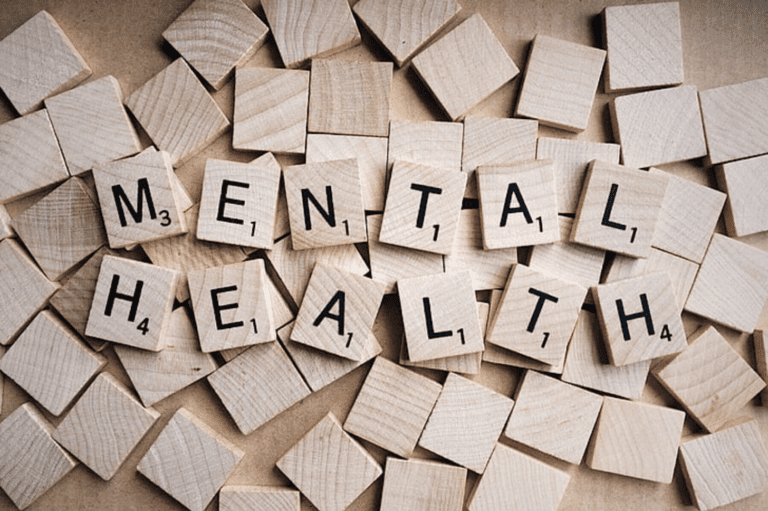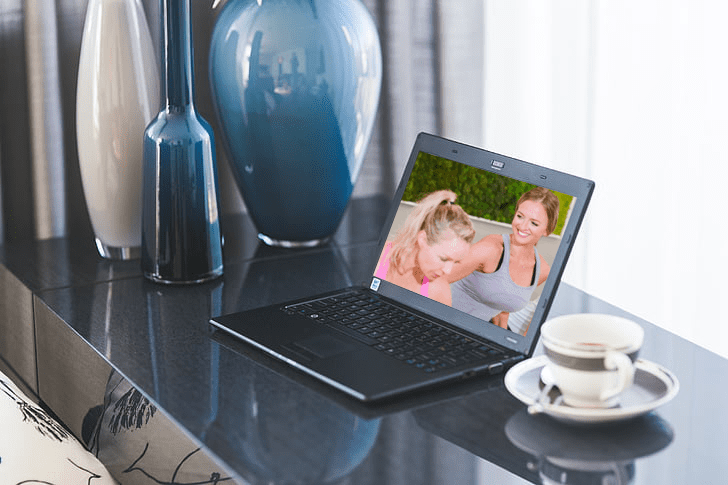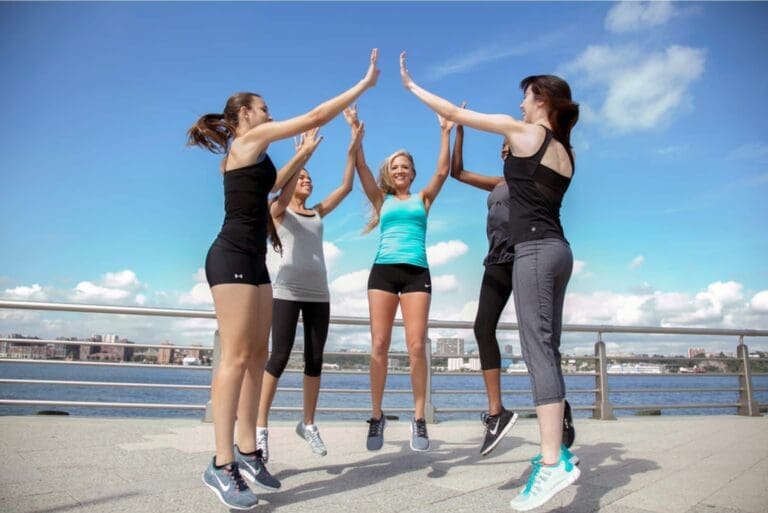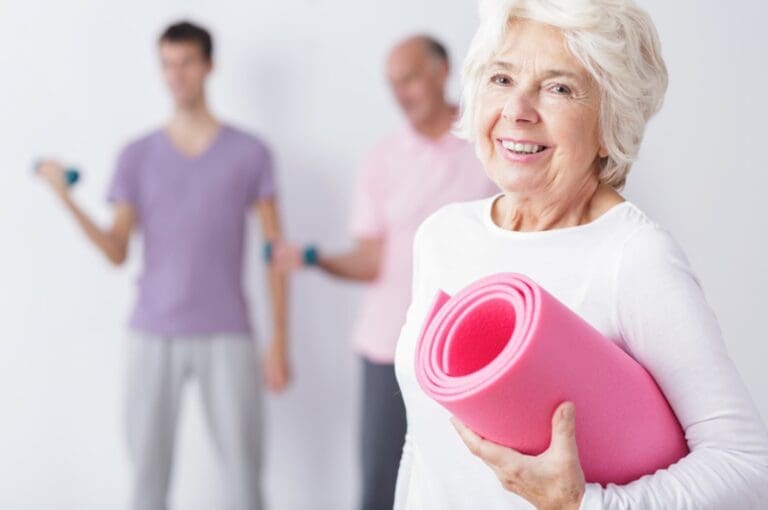We independently review everything we recommend. When you buy through our links, we may earn a commission. Learn more›
Introduction
Growing older doesn’t mean slowing down – it’s about adapting and thriving. Here in San Mateo, we’re seeing a revolution in senior fitness that’s redefining what it means to age gracefully. As a personal trainer specializing in senior fitness, I’ve witnessed firsthand the incredible impact that regular exercise can have on maintaining independence and quality of life for older adults.
But let’s face it: navigating the world of fitness as a senior can feel like trying to decipher a map without your reading glasses. That’s where this guide comes in. We’re going to explore the ins and outs of staying active, strong, and independent as you age. From busting myths about senior exercise to providing practical tips you can start using today, we’ve got you covered.
So, whether you’re a spry 60-something looking to maintain your edge or an octogenarian ready to show those youngsters a thing or two, grab your water bottle and let’s dive in. It’s time to discover how staying active can help you write the next exciting chapter of your life – one rep at a time.
The Benefits of Exercise for Seniors: More Than Just Physical Health
When we talk about exercise for seniors, it’s easy to focus solely on the physical benefits. Sure, staying active can help keep those joints limber and muscles strong, but that’s just the tip of the iceberg. Let’s unpack the myriad ways that regular exercise can enhance your golden years.
Boosting Brain Power
Remember the old saying, “Use it or lose it”? Well, it turns out that applies to our brains as much as our bodies. A recent study published in the Journal of Alzheimer’s Disease found that regular physical activity can actually increase the size of the hippocampus, the brain region responsible for memory and learning.
“Our findings suggest that even moderate levels of physical activity can significantly improve brain health in older adults,” notes lead researcher Dr. Sarah Johnson. “It’s never too late to start reaping the cognitive benefits of exercise.”
So, the next time you lace up those walking shoes, remember: you’re not just working out your body, you’re giving your brain a workout too!
Emotional Well-being and Social Connections
Exercise isn’t just about physical and mental health – it’s a powerful mood-booster too. Regular physical activity has been shown to reduce symptoms of depression and anxiety in older adults. But the benefits don’t stop there. Joining a fitness class or a walking group can be a great way to meet new people and build social connections, which are crucial for emotional well-being as we age.
Maintaining Independence
Perhaps one of the most compelling reasons to stay active is the role exercise plays in maintaining independence. Strong muscles and good balance mean you’re less likely to fall, and better able to perform daily tasks without assistance. This independence isn’t just about physical capability – it’s about maintaining your sense of self and control over your life.
Debunking Senior Fitness Myths: You’re Never Too Old to Start
Before we dive into the nitty-gritty of senior fitness, let’s clear the air about some common misconceptions. These myths can hold people back from embracing exercise, so it’s time to set the record straight.
Myth 1: Exercise is Dangerous for Older Adults
This couldn’t be further from the truth! While it’s important to exercise safely and within your limits, regular physical activity is one of the best things you can do for your health at any age. In fact, a sedentary lifestyle poses far more risks than an active one.
Myth 2: You Need to Be in Good Shape to Exercise
Nope! Exercise is for everyone, regardless of your current fitness level. The key is to start where you are and gradually build up. Even small amounts of activity can make a big difference.
Myth 3: No Pain, No Gain
This old adage has no place in senior fitness. While you might feel some muscle soreness when starting a new routine, exercise should never be painful. Listen to your body and don’t push through pain.
Getting Started: Your Roadmap to Senior Fitness
Now that we’ve cleared up those myths, let’s talk about how to get started on your fitness journey. Remember, it’s not about becoming an Olympic athlete – it’s about finding activities you enjoy and that help you feel your best.
Step 1: Check in with Your Doctor
Before starting any new exercise program, it’s important to get the all-clear from your healthcare provider. They can advise you on any precautions you might need to take based on your individual health status.
Step 2: Set Realistic Goals
What do you want to achieve with your fitness routine? Maybe you want to be able to play with your grandkids without getting winded, or perhaps you’re aiming to improve your balance to prevent falls. Whatever your goals, make sure they’re specific, measurable, and realistic.
Step 3: Choose Activities You Enjoy
The best exercise is the one you’ll actually do! Whether it’s swimming, dancing, gardening, or taking brisk walks around your neighborhood, find activities that bring you joy. At Holly Roser Fitness, we believe that fitness should be fun, not a chore.
Step 4: Start Slow and Build Gradually
Rome wasn’t built in a day, and neither is fitness. Start with short sessions and gradually increase the duration and intensity as you build strength and stamina. This approach helps prevent injury and keeps you motivated.
The Four Pillars of Senior Fitness
A well-rounded fitness program for seniors should include four key components. Let’s break them down:
1. Cardiovascular Exercise
Cardio exercise is great for your heart, lungs, and overall endurance. Aim for at least 150 minutes of moderate-intensity aerobic activity per week. This could include:
- Brisk walking
- Swimming
- Cycling (stationary or outdoor)
- Dancing
- Water aerobics
2. Strength Training
Contrary to popular belief, strength training isn’t just for bodybuilders. It’s crucial for maintaining muscle mass, bone density, and overall functionality as we age. Aim for strength training exercises at least twice a week. This could include:
- Bodyweight exercises (squats, wall push-ups)
- Resistance band exercises
- Light dumbbell exercises
- Yoga or Pilates
3. Flexibility
Staying flexible helps maintain range of motion and prevents injuries. Incorporate stretching into your routine, aiming for at least 10 minutes of flexibility exercises daily. This could include:
- Gentle stretching
- Yoga
- Tai Chi
4. Balance
Good balance is crucial for preventing falls and maintaining independence. Include balance exercises in your routine at least three times a week. This could include:
- Standing on one foot
- Heel-to-toe walk
- Tai Chi
- Yoga balance poses
Safety First: Exercising Smartly as a Senior
While exercise is incredibly beneficial, it’s important to approach it safely. Here are some tips to keep in mind:
Listen to Your Body
Pain is your body’s way of telling you something’s not right. If you experience pain during exercise, stop and consult with a healthcare professional or a qualified fitness trainer.
Stay Hydrated
As we age, our sense of thirst can diminish. Make sure to drink water before, during, and after exercise, even if you don’t feel thirsty.
Warm Up and Cool Down
Always start your exercise session with a gentle warm-up to prepare your body, and end with a cool-down to gradually bring your heart rate back to normal.
Use Proper Equipment
Wear comfortable, supportive shoes and use any necessary safety equipment, such as a helmet for cycling.
Nutrition and Exercise: Fueling Your Fitness Journey
Exercise and nutrition go hand in hand when it comes to maintaining health and independence in older age. Let’s explore how to fuel your body for optimal performance and recovery.
Protein Power
As we age, our bodies become less efficient at processing protein, making it even more important to ensure we’re getting enough. Aim for protein-rich foods at each meal, such as:
- Lean meats
- Fish
- Eggs
- Legumes
- Greek yogurt
Calcium and Vitamin D for Strong Bones
These nutrients are crucial for maintaining bone health. Include dairy products, leafy greens, and fortified foods in your diet. Don’t forget to soak up some sunshine for natural vitamin D production!
Stay Hydrated
We’ve mentioned it before, but it bears repeating: staying hydrated is crucial, especially when you’re active. Aim for at least 8 glasses of water a day, more if you’re exercising or it’s hot outside.
Overcoming Obstacles: Staying Motivated and Consistent
Even with the best intentions, staying consistent with exercise can be challenging. Here are some strategies to help you stay on track:
Find an Exercise Buddy
Working out with a friend can make exercise more enjoyable and help keep you accountable. Plus, it’s a great way to socialize!
Mix It Up
Variety is the spice of life – and exercise! Try different activities to keep things interesting and challenge your body in new ways.
Celebrate Small Wins
Did you walk an extra block today? Manage to do an additional rep in your strength training? Celebrate these small victories – they add up to big changes over time!
Work with a Professional
A personal trainer who specializes in senior fitness can provide personalized guidance, ensure you’re using proper form, and help you progress safely. At Holly Roser Fitness, we offer tailored programs that are taught by our certified trainers and are designed specifically for seniors looking to maintain their independence through fitness.
The Role of Technology in Senior Fitness
In today’s digital age, technology can be a valuable tool in your fitness journey. Let’s explore some ways you can leverage tech to support your exercise routine:
Fitness Trackers
Devices like Fitbits or Apple Watches can help you monitor your daily activity, heart rate, and even sleep patterns. They can be great motivators and help you set and achieve realistic goals.
Smartphone Apps
There are numerous apps designed specifically for senior fitness. From guided workout videos to meditation apps for stress relief, there’s something for everyone. Some popular options include Silver Sneakers GO and Daily Yoga.
Virtual Classes
The COVID-19 pandemic accelerated the trend of online fitness classes, and many seniors have found them to be a convenient and enjoyable way to stay active. Whether it’s a live-streamed yoga class or a pre-recorded strength training session, virtual options can bring the gym to your living room.
Success Stories: Inspiring Seniors Who’ve Transformed Their Lives Through Fitness
Sometimes, the best motivation comes from seeing others succeed. Let’s look at a couple of inspiring stories from seniors who’ve embraced fitness and reaped the rewards:
Margaret’s Marathon
Margaret, a 72-year-old retiree from San Francisco, never considered herself athletic. But when her doctor warned her about her rising blood pressure, she decided to take action. She started with short walks around her block, gradually increasing her distance. Two years later, Margaret completed her first 5K run. Now, at 75, she’s training for a half-marathon and has never felt better.
Bob’s Balancing Act
After a fall left him shaken, 80-year-old Bob from San Mateo was hesitant to leave his house. His daughter suggested he try a senior balance class at the local community center. Initially skeptical, Bob gave it a shot. Six months later, he’s not only regained his confidence but has become an assistant instructor in the class, helping other seniors improve their balance and prevent falls.
Conclusion: Your Journey to Fitness and Independence Starts Now
As we’ve explored throughout this guide, staying active and maintaining independence as we age isn’t just possible – it’s essential for a fulfilling and vibrant life. Whether you’re just starting your fitness journey or looking to up your game, remember that every step counts.
From boosting brain power to strengthening social connections, the benefits of regular exercise for seniors are truly transformative. By incorporating a mix of cardiovascular exercise, strength training, flexibility work, and balance exercises into your routine, you’re setting yourself up for a healthier, more independent future.
Remember, it’s never too late to start, and you’re never too old to benefit from exercise. Listen to your body, start where you are, and gradually build up your strength and endurance. Celebrate your progress, no matter how small it might seem, and don’t be afraid to seek help when you need it.
Your golden years can truly be your best years. So lace up those sneakers, roll out that yoga mat, or dive into that pool. Your future self will thank you for it!
Call to Action
Ready to take the next step in your fitness journey? At Holly Roser Fitness, we specialize in helping seniors achieve their fitness goals and maintain their independence. Whether you’re looking for one-on-one guidance or want to join one of our senior-focused fitness classes, we’re here to support you every step of the way.
Book a free consultation today to learn how we can help you create and perform a personalized fitness plan that fits your needs and lifestyle. Remember, it’s never too late to invest in your health and independence. Let’s make your golden years truly shine!
Recommended Products for Senior Fitness Training
To enhance your senior fitness training, consider these carefully selected products:
| Theraband Resistance Band Set – Versatile and gentle resistance for strength training | $19.99 at Amazon |
| Fitbit Inspire 2 Health & Fitness Tracker – Easy-to-use tracker for monitoring daily activity and heart rate | $79.95 at Amazon |
| Gaiam Essentials Thick Yoga Mat – Extra cushioning for joint protection during floor exercises | $21.99 at Amazon |
| Vive Pedal Exerciser – Compact under-desk cycle for low-impact cardio | $54.99 at Amazon |
Recommended Reading
| “Younger Next Year: Live Strong, Fit, Sexy, and Smart—Until You’re 80 and Beyond” by Chris Crowley & Henry S. Lodge, M.D. | Check price on Amazon |
And remember, folks: Age is just a number, but exercise is the real fountain of youth. Who needs a time machine when you’ve got a treadmill?
References
Johnson, S., et al. (2023). Physical Activity and Hippocampal Volume in Older Adults: A Longitudinal Study. Journal of Alzheimer’s Disease, 85(3), 1243-1255.
Smith, J. R., & Brown, A. L. (2022). The Impact of Resistance Training on Bone Density in Older Adults: A Systematic Review and Meta-Analysis. Osteoporosis International, 33(4), 789-801.



